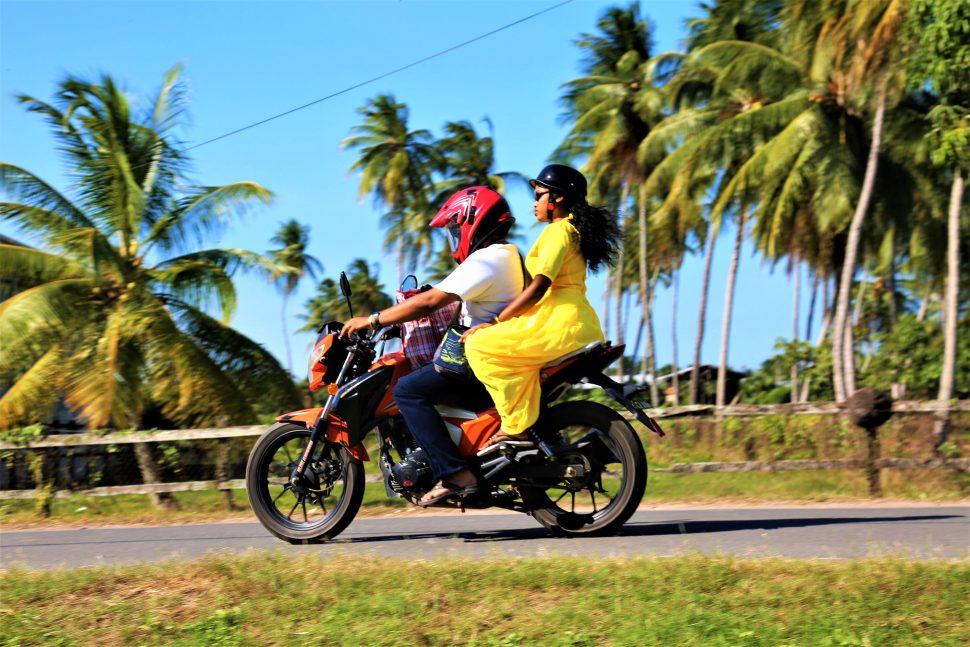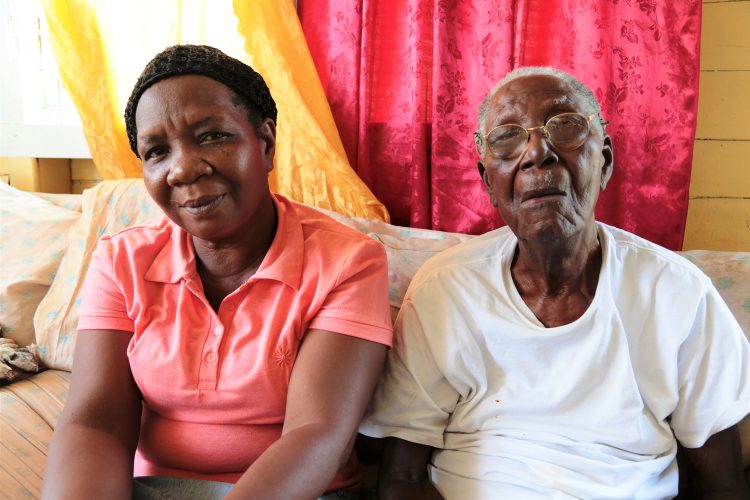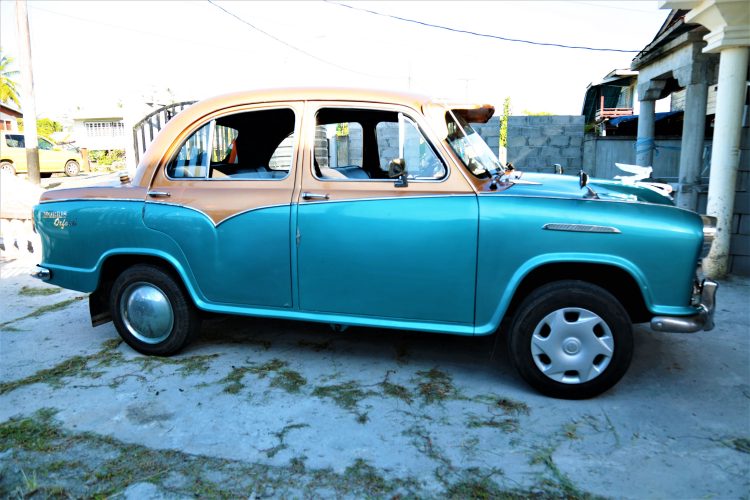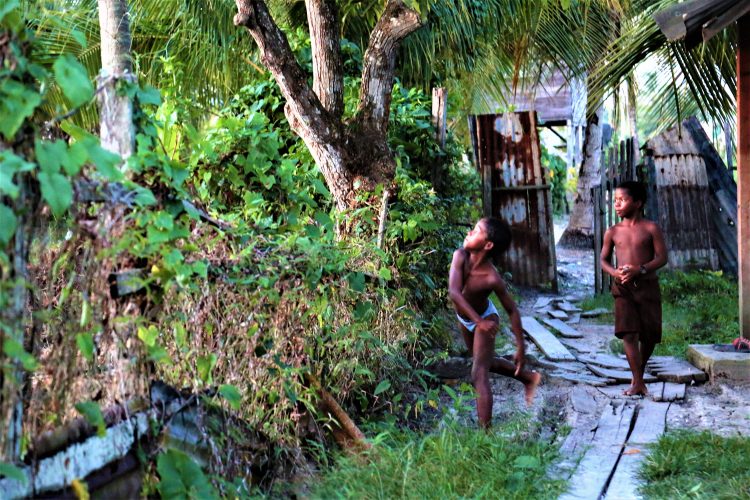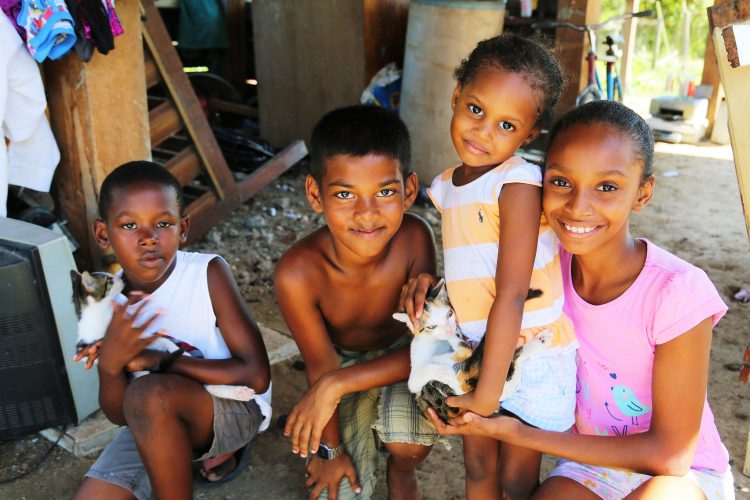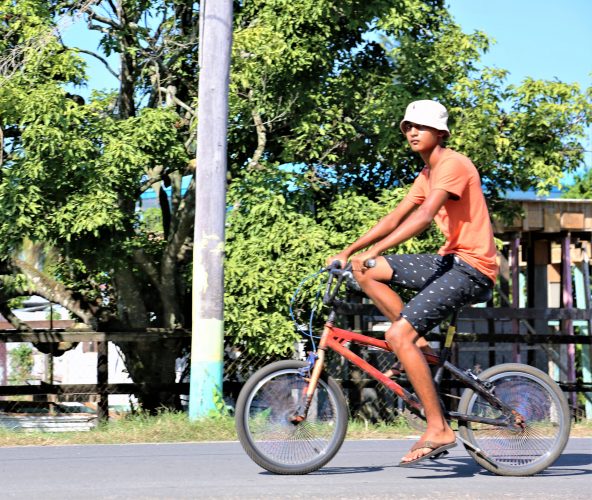Mount Sinai is a beautiful little village surrounded by Vryheid, Savannah Park, Angoy’s Avenue and Bermine Scheme in New Amsterdam. Many of the residents are of Christian background, reflecting the name of the village.
Early Sunday morning when this reporter visited, the Mount Sinai Assembly of God Church rang out with worship songs. The Mount Sinai Seventh Day Adventist Church is a few lots away on the same street.
Many animals dotted the grassy parapets and brightly coloured flowers seemed to be escaping the fences.
At 98, Esric Byass is the oldest member of the Mount Sinai Adventist Church and the oldest man in the village. He was happy for the visit and went straight to talking about the village. According to Byass, the village was under the care of a man called Percy White, who would sell villages at such a high cost that persons who made down payments would be unable to follow through and the villages would remain in his name. However, Byass said, a resident of Mount Sinai at that time by the name of Duga Singh realised this and got, other persons living on the Corentyne and across the river to pool their money and purchase Mount Sinai.
“After they buy the place, they start to sell out land piece, piece, piece. My parents buy this lot and the lot next to it,” he recalled. “I was born at Asylum Street, not far from here. When I come here to live, I was about eight years old. When I used to go to school, we used to address the place as Vryheid, West Canje but was always Mount Sinai. I don’t know why they call it Mount Sinai; I come and meet it as Mount Sinai. The houses had ‘trash tops’ and the wall was ‘cabbage board’ and the houses were far apart, far apart.”
He said he believed his parents paid $20,000 for each lot, noting that such sums of money was difficult to come by at that time. He noted that when he first began working, he was paid 50 cents per day; he did carpentry. Coming from an Adventist home, the family of 12 (parents and 10 children) lived mostly a vegetarian life. Byass is certain that is the reason for many of them living quite a long time.
“Most of us meet 90 before we die. My father died at 99, my mother died at 89; the brother that followed me, he died in America, he was 91. My eldest brother was 97 when he died; the sister after him was 93; another sister died in 2016, she was 100, 4 months, 18 days,” he said.
Only Esric and his brother, Gershon Byass (a former president of the Guyana Conference of Seventh Day Adventist Church) who is 90, remain alive. His wife passed away three years ago at 93 years old. Asked how he felt to be 98, Byass exclaimed with hands in the air that he felt “great”. Byass said he owed his longevity to his eating habits, mentioning that he only eats twice a day. In the mornings, he would have cereal or bread or bake with peanut butter which his nephew’s wife would prepare, along with fruits. His caretaker, Theresa Jasper, would prepare his lunch which he would eat at two in the afternoon. He often has boiled and fried ground provision with split peas which Jasper noted is a favourite of his. To go with his lunch, she would prepare some fruit juice. If he has anything after that it would only be water.
Years ago when he was a boy, Byass said, one of the hardest chores he did was fetching water from the Water Works. The water fetching, he added, was laborious. Another one of his chores saw him in the backdam planting cassava, eddoes and sweet potatoes. What they had most of was pigeon peas, he shared, adding that he grew up on pigeon peas stews and soups. They also made cassava bread, quinches (sweet cassava bread) and cassava pone which he and one of his brothers went around the village to sell in the afternoon; his mother made cassareep also. His father worked as a carpenter. The men back then, he noted, were mostly farmers while some worked at the now defunct boat stelling as porters and other jobs. Apart from being a farmer, Byass worked also as a colporteur, which he mentioned provided the means for him to build his house.
The Mount Sinai Seventh Day Adventist Church is situated on the front part of Byass’s property. The church, he noted, began as a ‘bottom house’ church and he later donated the land.
In the morning hours, Byass would sit outside on his verandah enjoying the breeze while singing church hymns and tapping on his chair. “You know,” he said, “I’m thinking about building my tomb. I had built a tomb about six years ago because I say when I die, she [his wife] ain’t got the headache of having to deal with that. But she went and die. I really thought I would have died before her. So, I’m hoping to build my tomb before the year out. It pays to serve Jesus. It pays every day. It pays every step of the way. I enjoy my life. I’m waiting on my Lord. Whenever He ready for me, I’m ready to go.”
Beverly Arjune was doing chores when I caught up with her. She hails from Glasgow, East Bank Berbice. Arjune moved with her family to the village in 2004. Moving, the woman explained, bettered their lives. Prior to moving it was difficult for her children who were all of school age to get to school. Many days, she said, because of the deplorable roads and lengthy time it would take for drivers to traverse them, they would only pick up the adults during peak hours. However, with the move the children were transferred to nearby schools and things were easier for them; her children are grown now.
Arjune indicated that with the move also brought them closer to the commercial area. This allows for her to spend less money in getting to and from the market.
Most of the residents, she said, are labourers working at the Rose Hall Estate or farmers rearing livestock. She has her own herd of cows and some poultry while her husband works as a chainsaw operator.
Mount Sinai has the convenience of potable water and electricity and telephones are situated a short distance away from the main road in New Amsterdam.
She issued a plea to the government to look into providing farmers with a pasture where their animals can graze, noting that an animal caught by the stray catchers means a fine of $5,000, specifically in the case of a cow.
Her second request is for her neighbours living behind her be given their land titles. She added that because they are squatting, they have no roads leading to their homes. A few of her neighbours would use the track to her home to access theirs. Arjune added that if her neighbours were able to get transports for their property, they could look forward to getting their own access roads.
Sixty-nine-year-old Chandrowtie Singh was resting in her hammock. She spent most of her life in the village. Singh arrived in Mount Sinai to live with her aunt and uncle and their seven boys after losing her mother. She first attended Rose Hall Scott School but after the move she started attending Lochaber Primary School. However, by third grade she had no choice but to leave school since her aunt had taken ill and being the only girl in the family, she was assigned to duties within the home. “… Me and meh aunty and uncle used to catch shrimps and fish from the Lochaber punt trench… We used to go and catch every day; only on holidays we nah used to go. That was we living. Then me aunty used to go sell out in the New Amsterdam Market,” she recalled.
The pensioner now spends her days planting bora, okra, pepper and calaloo. But she said the land is not as fertile now owing to it being planted on ever since she was a little girl. Today she lives with her husband, her son and daughter and her family.
Pointing to her drain she said that it has been a while since it was cleaned and she wanted the Neighbourhood Democratic Council to look into doing so. The drain was filled with water lilies from one end to another. Singh said that once in a while Hindus would stop to pick the lily leaves to use at their functions.
